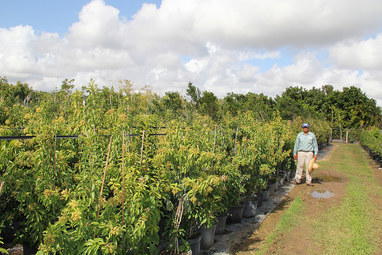|
Story by Tindall Adams '18 and Delina Sheth '18
Harper was inspired by a trip to Japan where he witnessed the effects of radiation poisoning on farmland in Fukushima after the devastating tsunami in 2011. It seemed the future of farming in Fukushima would never be safe and sustainable; therefore, he created a climate controlled agricultural platform known as the “food computer”. He believes his invention will revolutionize the way we farm and eat food.
The personal food computer, which is the smallest model of his invention, is about the size of a small coffee table. At first glance, it appears to be a simple box with glass windows and LED lights. However, the food computer is much more complex. It is a climate-controlled environment that uses hydroponic and aeroponic systems to grow crops indoors and has a different array of sensors that monitor the internal climate in a growing chamber so the environmental conditions remain constant and optimum. Temperature, relative humidity, carbon dioxide and oxygen levels, pH of water, electrical conductivity of water, exposure to various nutrients, fertilizers, and chemicals that determine how a plant grows are the many climate conditions part of the computer. These conditions can be easily and tightly controlled to insure quality of food. The food grows quite differently than ordinary plants however; there is no soil in the food computer. Instead, plants get nutrients through a mist as the roots dangle in open air (aeroponics). Not only do these computers grow food, but they also act similarly to a 3D printer. The computers allows users of the computer to share their recipes on a database, so other people around the world have the instructions to grow an identical plant. For example, a user could buy a packet of tomato seeds and download the instructions on how to grow a tomato onto the database. Then, another user in a different country on the other side of the world could use the instructions and be able to tweak them to match their preference. So why are food computers important and revolutionary for the future of food? The answers are endless. Food computers can save time, money, resources, all while turning ordinary people into sustainable farmers. You can build them yourself, and they do not require many resources to operate. They also do not need soil or any land space, which will allow users to grow food anywhere, especially in urban areas where there is limited access to fresh food. Because anyone can grow food, food will no longer have to be shipped long distances (for example, one could grow amazing Chile peppers in New York City in Andes Mountain-like conditions), and it grows 20-30% faster than ordinary farming. Finally, the human footprint on earth will be less severe and more impactful with food computer farming. The plants in the computer require less water and they cut the carbon footprint of transporting plants, all while still having very fresh food. As the human population increases drastically and agricultural food production demands will double by 2050, food shortage problems can be solved with food computers. We can’t wait to see what else the future holds. Resources: Wikipedia Washington Post Open AG website Tech Times Huffington Post Smithsonian
0 Comments
Leave a Reply. |
